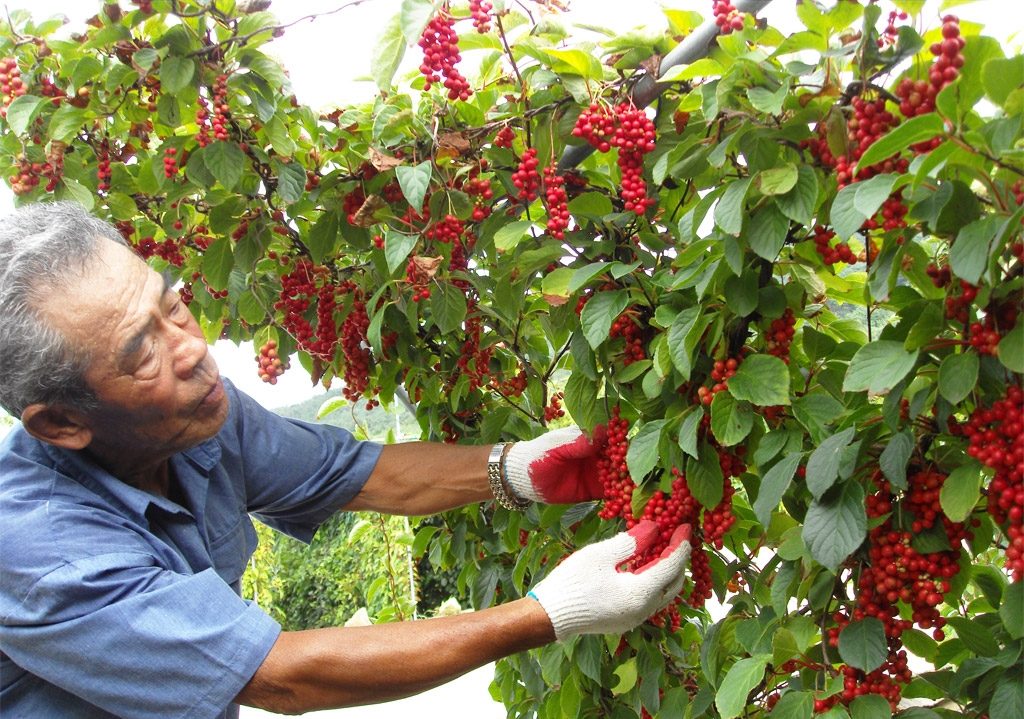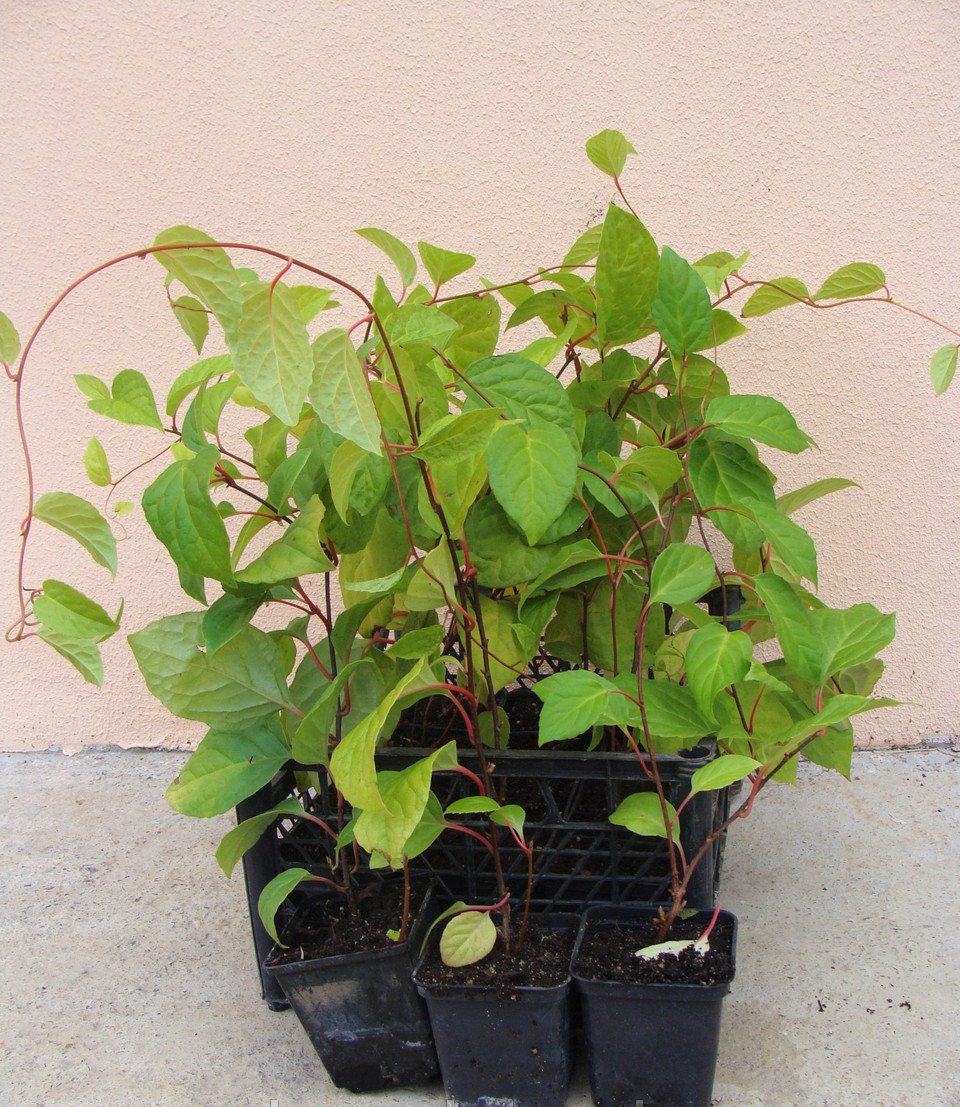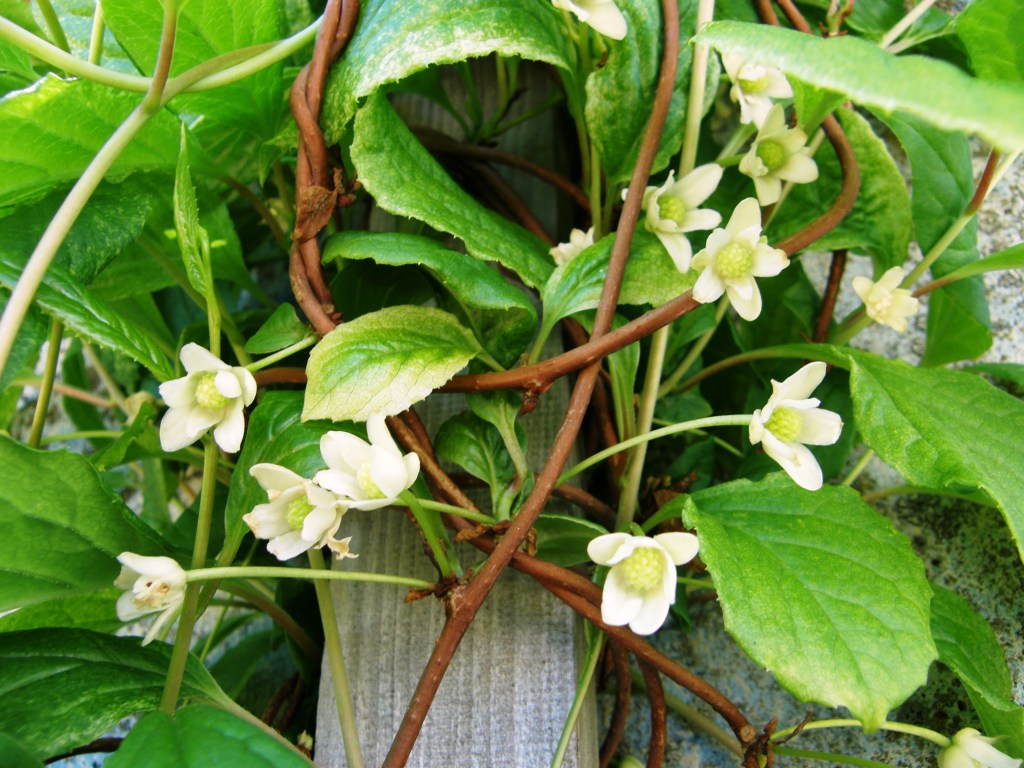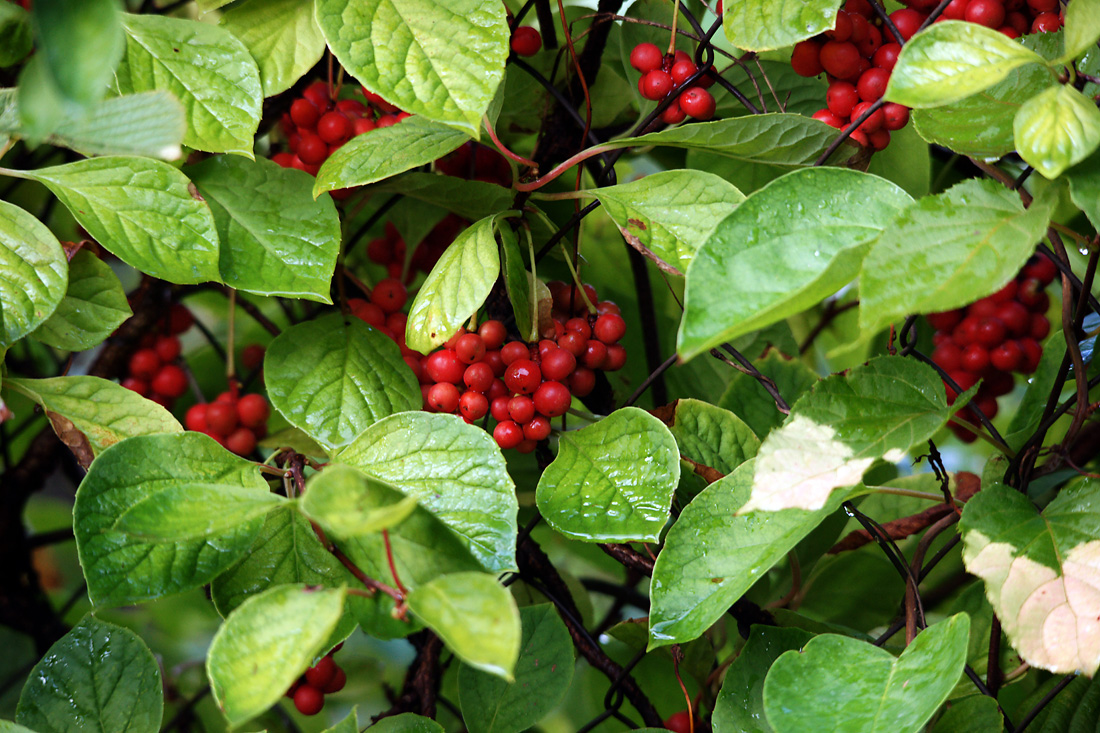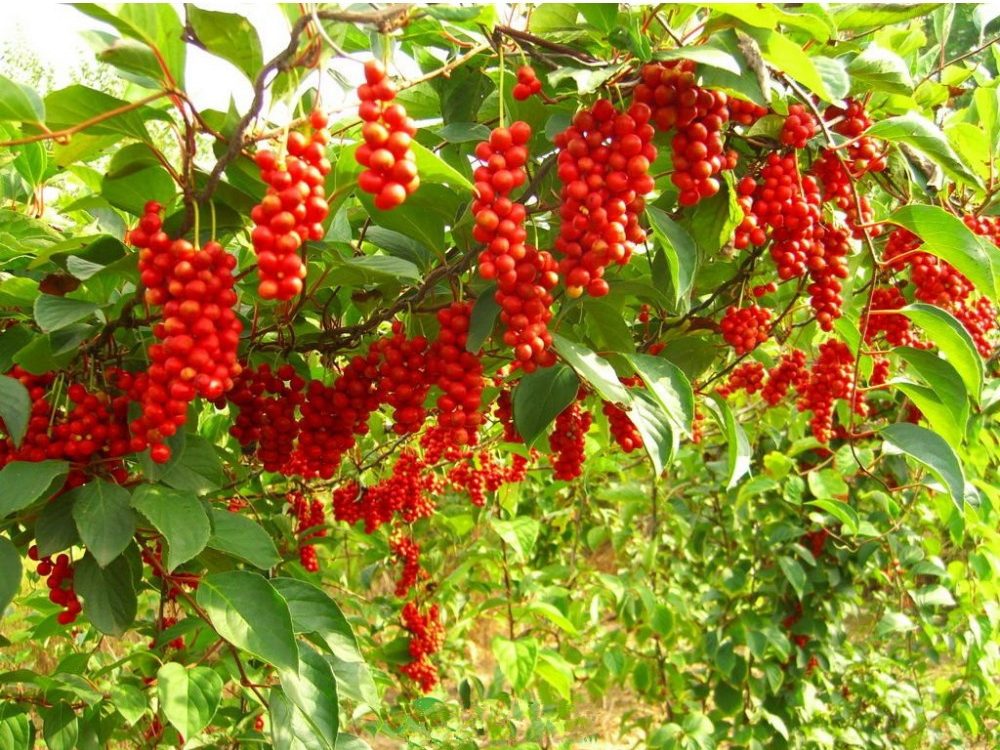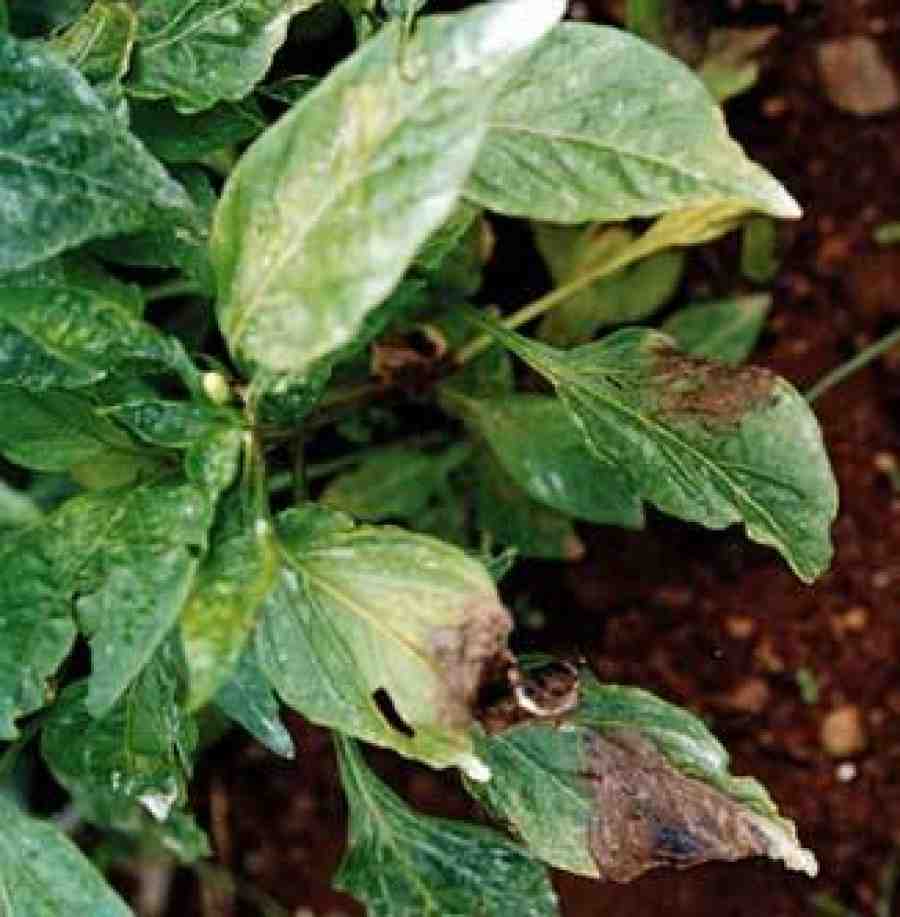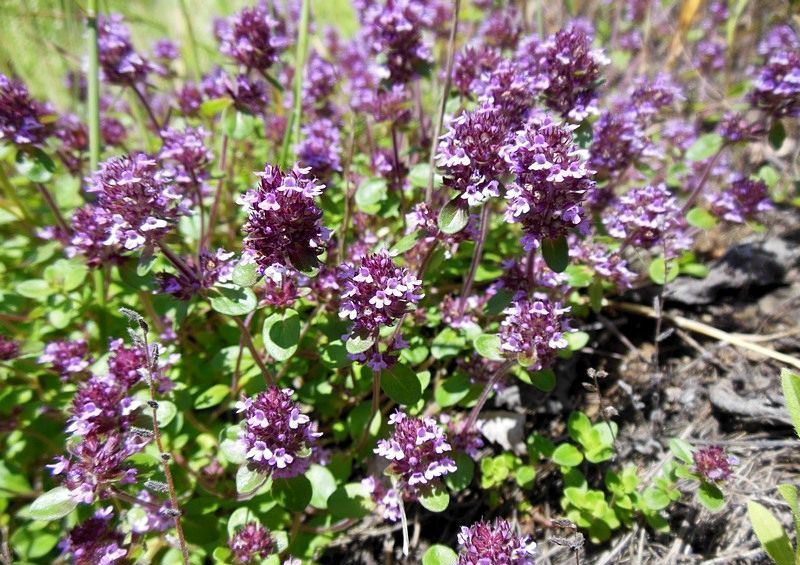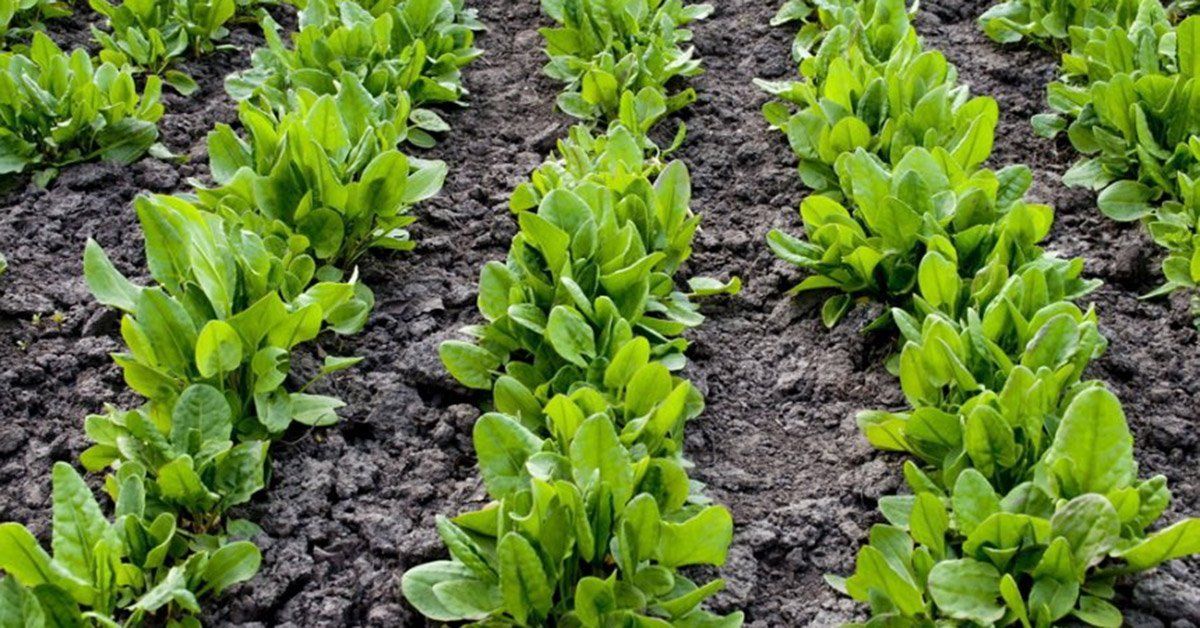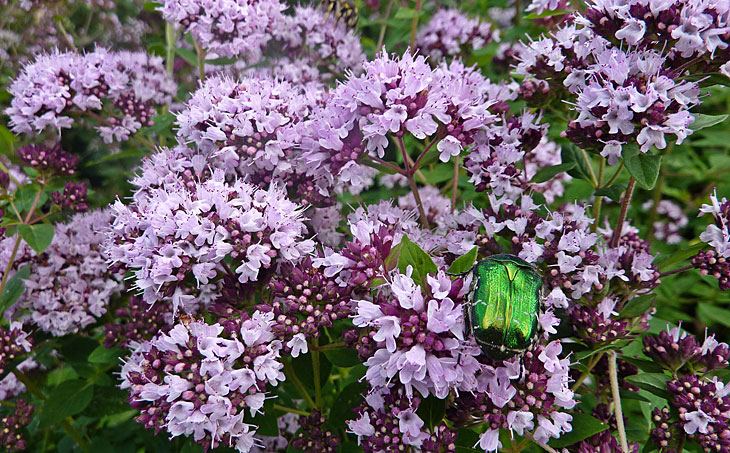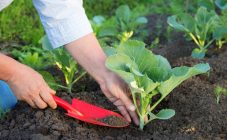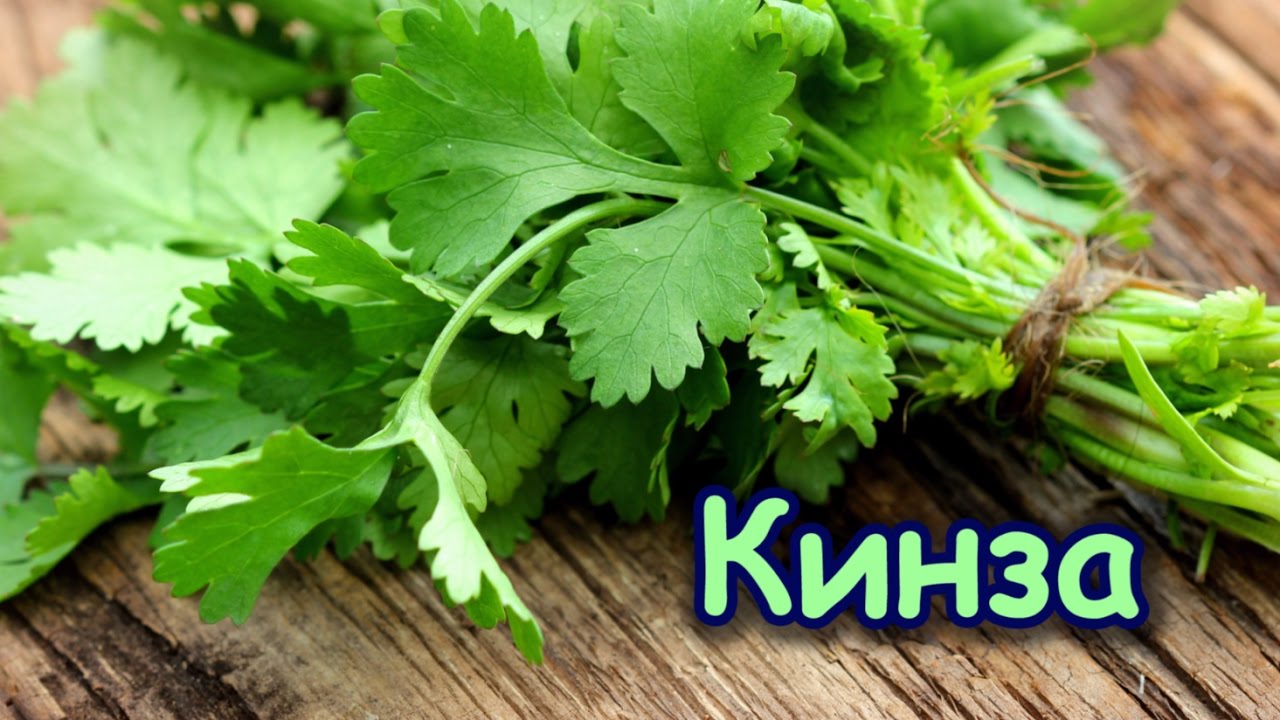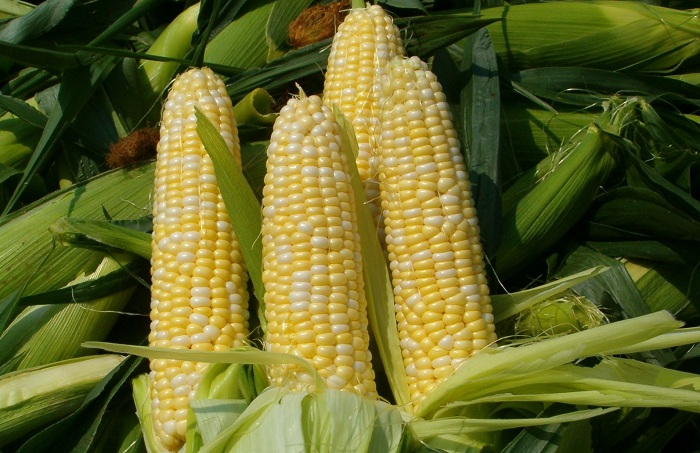Content:
Schisandra is a plant of the Schisandra family. Several varieties of lemongrass are cultivated in Russia: Far Eastern, Chinese. In another way, it is called the lemon tree or medicinal lemongrass. The article discusses lemongrass planting and care in the open field, methods of plant propagation.
Description of the plant
If the garden smells of citrus, then lemongrass is blooming.
Deciduous liana grows up to 10-15 m in length, the diameter of the stem is 2 cm. The leaf plate is large, 10 cm long, 5 cm wide. The leaves are dark green, the top is pointed. The leaves and stems are fragrant, the aroma is reminiscent of lemon.
The flowers grow small, 1-1.5 cm. At the beginning of flowering, the petals are white, gradually turning pink. The flower, like the green part of the plant, emits a pleasant citrus aroma. Flowering lasts 2 weeks, begins in the second decade of May or early June.
When lemongrass fades, the fruit appears. Lemongrass begins to bear fruit 5-6 years after planting in the garden. Ripe red berry, seeds are formed in it. In September, lemongrass berries are harvested.
The use of lemongrass berries:
- They make delicious jam;
- Berry jelly is cooked;
- Useful compote;
- They are used in the confectionery industry as a delicious candy filling.
Planting lemongrass in open ground
Lemongrass flower is an unpretentious culture grown in southern Russia and in the middle lane. The correct choice of a site for planting lemongrass allows the plant to fully grow and develop, without giving the gardener additional care.
The planting time for lemongrass depends on the climatic characteristics of the region. In the Moscow region, it is planted in the garden in spring, and in the south, the preferred time for planting lemongrass is the autumn period.
Requirements for the site, how and where to grow lemongrass:
- The bed should be in a well-lit place. It is advisable that the light fell for at least 8 hours on the site; it should not shade much on the garden bed. The sun has a positive effect on plant and fruit growth;
- It is advisable to choose a garden plot without drafts, the plant does not tolerate cold winds well. If the dacha is located in an area where constant winds blow, then it is recommended to plant lemongrass next to a wall or fence;
- Schisandra grows well on light, well-drained soils with neutral acidity;
- The plant winds in the process of growth, so it is important to take care of the supports for the stem in advance. You can plant lemongrass next to a fence, gazebo, arch, or prepare special trellises.
Before planting lemongrass in the garden, the soil is prepared in advance.
It is necessary to perform the following agrotechnical manipulations:
- Dig up the earth, loosen it up;
- Feed the soil by adding any of the fertilizers to the soil: humus, wood ash, peat, superphosphates, ammonium nitrate;
- Drainage with broken brick or small river pebbles;
- If the soil has an increased level of acidity, then it is necessary to deoxidize the soil. To lower the acidity to a level close to neutral, dolomite flour and limestone are added to the soil.
Step-by-step instructions on how to plant lemongrass:
- Dig holes 50-70 cm wide and 40 cm deep;
- Lay out drainage material 10-15 cm thick on the bottom of each hole. For this, you can take crushed stone, broken brick, river pebbles;
- Pour the nutrient mixture into the hole. To prepare the mixture, you need to mix the sod land, leaf compost with humus. Add 200 g of superphosphate and 400-500 g of wood ash. Mix all ingredients. Drainage and top dressing are laid 2-3 weeks before planting, the soil should settle;
- Strong young seedlings are chosen for planting, the average age is 2-3 years. They should be 10-15 cm high with a well-developed root system. Water the hole with water, put the seedling in the middle, gently straighten the roots;
- The root collar should be above ground level;
- Sprinkle the seedling with earth, tamp it with your hands, pour abundantly with cool water;
- Place a hole near each seedling, this will keep moisture in the ground;
- After that, you need to mulch the soil with sawdust from wood or humus with straw.
Lemongrass care
The planted young lemongrass adapts well to a new place after planting. For the first time, it is recommended to protect the young plant from direct sunlight for 3 weeks.
Rules for how to care for lemongrass:
- Watering;
- Loosening;
- Weeding;
- Top dressing;
- Pruning;
- Spraying leaves with water during dry periods;
- Treatment when a plant is damaged by pests.
The first feeding is done three years after planting on the site. In mid-April, 2-3 tbsp is added to each hole where young lemongrass grows. tablespoons of saltpeter, then pour water well. When moisture is absorbed, mulch the soil. A layer of leaf compost or humus will serve as mulch for lemongrass.
In the summer, every 2 weeks you can feed the plant with chicken droppings or fermented mullein diluted in water in a ratio of 1: 10.
Preparing lemongrass for winter, the soil is fed from autumn with wood ash and superphosphate. To deepen the top dressing into the hole to a depth of 7-10 cm, then water the area.
Supports for lemongrass
The plant is light-loving, belongs to the loaches, therefore, for proper growth and development, it needs support. Schisandra will develop rapidly if, as it grows, it is fixed on a support (trellis), so the plant receives enough light, the berries grow larger.
Trellis are installed before planting seedlings. They are easy to make yourself. You will need long wooden sticks or beams about 2.5-3 m. They are dug in to a depth of half a meter. It is advisable to leave 2-2.5 m above the ground. The distance between the bars is 2-5.3 m.
Between them, stretch the wire in three rows: the bottom row is at a distance of 50 cm from the ground, the second and third - after 1 m. As it grows, the climbing plant is hooked, starting from the first row, and then, as it grows, onto the upper wire.
If lemongrass is planted near a building (gazebos, stairs, fences), then they serve as supports for a climbing plant.
Pruning lemongrass
In 2-3 years after the planting of young shoots, the ground part begins to develop intensively. At this time, pruning is carried out. Leave 3-6 growing shoots, the rest can be cut off. The event takes place in the fall, when the foliage falls.
Sanitary pruning can be done in summer and fall. Cut off dry, disease-damaged branches, thickening, broken stems. Long shoots are cut off, 10-12 buds are left. The amount of sanitary trimmings depends on the condition of the plant.
Anti-aging pruning is performed on the old plant. Branches that are 15 years old are gradually removed, replaced with new root shoots.
Lemongrass transplant
A plant that is 3-5 years old does not tolerate transplanting to another place.Therefore, it is better to think in advance about a permanent place for lemongrass.
If you need a transplant to a new place, then you need to prepare for the procedure.
Recommendations on how best to transplant lemongrass to a new place in spring:
- A garden bed for lemongrass is fertilized several weeks before transplanting;
- It is necessary to dig it with a large clod of earth so that the plant can take root in a new place.
Reproduction of lemongrass
A climbing plant is propagated in several ways:
- Seed method. How to plant lemongrass on your own from seed: the seed is collected from ripe fruits, in the spring the lemongrass seeds are sown in boxes, deepening them by 5 mm. They are covered with newspaper or paper and watered daily, the seedling substrate should be moist. The first shoots begin to appear in 10-14 days. They should be in a bright place, but protected from direct sunlight. The earth is watered with a weak solution of potassium permanganate. When 3-4 leaves grow, the seedlings are transplanted at a distance of 5 cm from each other. In the summer, indoor lemongrass can be planted in open ground. For the winter, it is covered with a layer of spruce spruce mulch or leaves. It is recommended to plant lemongrass in a permanent place after three years;
- Cuttings. For this method, it is necessary to cut off the upper part of the young shoots in early July. The lower cut is dipped for 24 hours in a solution of Heteroauxin or Kornevin. Then the cuttings can be planted in moistened sand and covered with foil, glass;
- Offspring and layering. Strong annual shoots in early April are bent to the ground and covered with a layer of peat 15 cm, fixing in one position. The upper part of the layering is fixed to the support. At the end of August, the cuttings take root. In the third year, the root system develops, and it can be separated and planted in a permanent place;
- Rhizome. In early April, choose root suckers. Prepare a transplant site, dig up healthy offspring with a small clod of soil and transplant to a permanent place. It is advisable to transplant immediately after digging up, since the roots of lemongrass dry out quickly. Within 3-4 weeks, young lemongrass needs abundant watering and protection from sunlight.
Pests and diseases
Schisandra is considered to be resistant to diseases and pests.
But sometimes, under unfavorable conditions, the plant is affected by certain diseases:
- Leaf spot. You can notice what a diseased lemongrass looks like on the underside of the leaves. There are brown blurred spots with dark dots. The disease can be fungal or bacterial in nature. Copper-containing preparations are used to combat;
- Phylostictosis. The disease manifests itself in the form of blackening of the leaf blade, framed by a purple border. The affected areas may fall off and holes appear on the leaves. Old leaves suffer from this disease. To destroy the disease, copper-containing agents are used;
- Ascochitis. The disease is noticeable by large brown spots. To destroy pathogens, the plant is treated with 1% Bordeaux liquid;
- Ramulariasis. Fungal lesion of the leaf plate, manifests itself in the form of brown spots and pink bloom. With this disease, lemongrass is treated with fungicidal agents;
- Powdery mildew. What is powdery mildew on lemongrass can be understood by the leaves and stems. Disease of fungal origin, affecting the stems and leaves of the plant. You may notice white bloom on leaf areas and stem. Subsequently, the color of the plaque darkens to brown. Soda ash is used to fight. For large affected areas, copper-containing preparations can be used for treatment;
- Fusarium. This is a disease of lemongrass seedlings. The lower part of the young stem is affected. If the disease progresses, the stem softens and the seedlings die. It is recommended to remove diseased seedlings, as they can harm healthy seedlings, treat the earth with a manganese solution.
Lemongrass in the Moscow region
Chinese or Far Eastern lemongrass can be grown in the Moscow region (middle lane), in the Urals and Siberia. The plant is adapted to cold climates and survives frosty winters well.
Protect young seedlings from frost. For the winter, they are bent down and covered with a layer of leaves or needles. Spruce spruce mulch repels rodents that can damage the plant. You can open the plant in early spring.
After 2-3 years, lemongrass may not be covered for the winter.
Lemongrass is an unpretentious and beautiful plant with a pleasant aroma that will delight gardeners for many years. Lemongrass berries are tasty and healthy. Simple planting and caring for the plant, the beneficial properties of garden lemongrass have made it popular throughout Russia. If you take into account the recommendations and tips for growing and caring for lemongrass, then garden culture will not cause trouble for gardeners.
